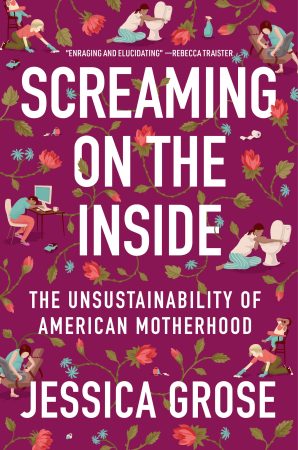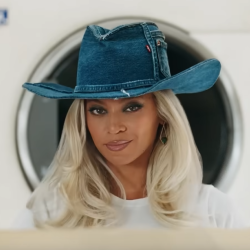A generation ago, the iconic eighties Enjoli ad showed us a maternal powerhouse in and outside the home who could and must do everything.
It speaks to a different era and features a woman dressed in a business suit, carrying a briefcase, and wearing high heels, performing several different roles, including working, cooking, and taking care of her children. The tagline was, ‘I can bring home the bacon, fry it up in a pan, and never let you forget you’re a man because I’m a woman.‘ The ad was intended to empower women by showing that they could do it all, but in today’s world, the ad is outdated and a haunting moniker of societal pressure from which women and mothers are now emerging.

The pandemic literally pointed the camera at domestic life and by extension, motherhood, revealing a very messy scene and showing just how out of touch culture has been about this massively important demographic. Mothers are still in charge of buying almost everything for their household, especially their kids — this includes food, clothing, household products, not to mention toys and other entertainment, revealing in itself the lingering domestic inequality of invisible labour.
Mums today are at their breaking point. In 2022, The New York Times‘ parenting columnist Jessica Grose published ‘Screaming on the Inside: The Unsustainability of American Motherhood‘, which elucidates the crises of American mums after years of unrealistic parenting expectations. Morgan Burke, founder of The School of Mom, started organizing ‘mum scream‘ events in which local mothers take to the football field to express their pain in primal battle cries.
Perhaps most noteworthy is Claire Danes’ scream in the miniseries Fleishman Is In Trouble (2022). Reportedly 45 seconds long, this is a cultural win for mums on screen. Danes’ character is the perfect antidote to the Enjoli ad, showing an over-burdened, career-driven mother battling her mental health, who says, in one scene, that the only thing harder than being a mother is being a working mother. Her animalistic scream represents the emotional toll of modern motherhood.
Thirty years ago mothers could seemingly have it all, in a potentially exciting opportunity for women. But how can marketers connect with today’s modern mothers? Here are some poignant tensions to consider showing in your next marketing campaign, to truly engage these powerful purchasers:
- Women working together. Modern mothers are often estranged from their community and learn to swaddle from YouTube more often than a person. Brands that foster online communities will come out on top but better yet, visually tapping into this tension of women supporting women could harness a primal, more supportive and solution-focused network of childrearing that no social media can mirror. *Watch out not to alienate mums by making them feel bad for not having friends
- Mental and physical toll. Show the messiness and imperfections, sure, but truly breaking the Enjoli façade is important, so better yet, find a grittier storyline that really illuminates the difficulty of holding that maternal space — of being the beginning (and end) of every moment in your child’s life. Let’s evolve the narrative from making peace with messy living rooms or spilling McCormick spices on your baby’s head, to the emotional cocktail kicked up by today’s gentle child-rearing techniques so tenderly chronicled in Bluey (2018—)
- The domestic gender gap. We talk a lot about this in the workplace but at home, mums don’t always need to chase the kids away from the dad’s zoom call. The mum might also demand space for work. Or maybe dad is honing his savvy consumer skills for their family’s wellbeing, so consider showing a dad (who is not in a same sex couple) night feeding and scrolling for non-toxic disinfectants
- Ambition to both work and stay at home. Modern feminism has been a win and a loss and women are still conflicted about ‘having it all’, while garnering criticism for leaning one way or another. How can your brand support working mothers and stay at home mothers, whilst giving credit to both options and permutations thereof?
- Give value to her job. Not the one she gets paid for, but the one she does selflessly to grow better humans to make a more peaceable world. I’m thinking of Oreos’ Proud Parent ad, ‘A loving world starts with a loving home‘, but giving credence to mums and primary caretakers. Some flowers from 1-800-FLOWERS might make her feel regal, but really, show that your brand understands the value she contributes to the world.
Featured image: Claire Danes in ‘Fleishman Is in Trouble’


































